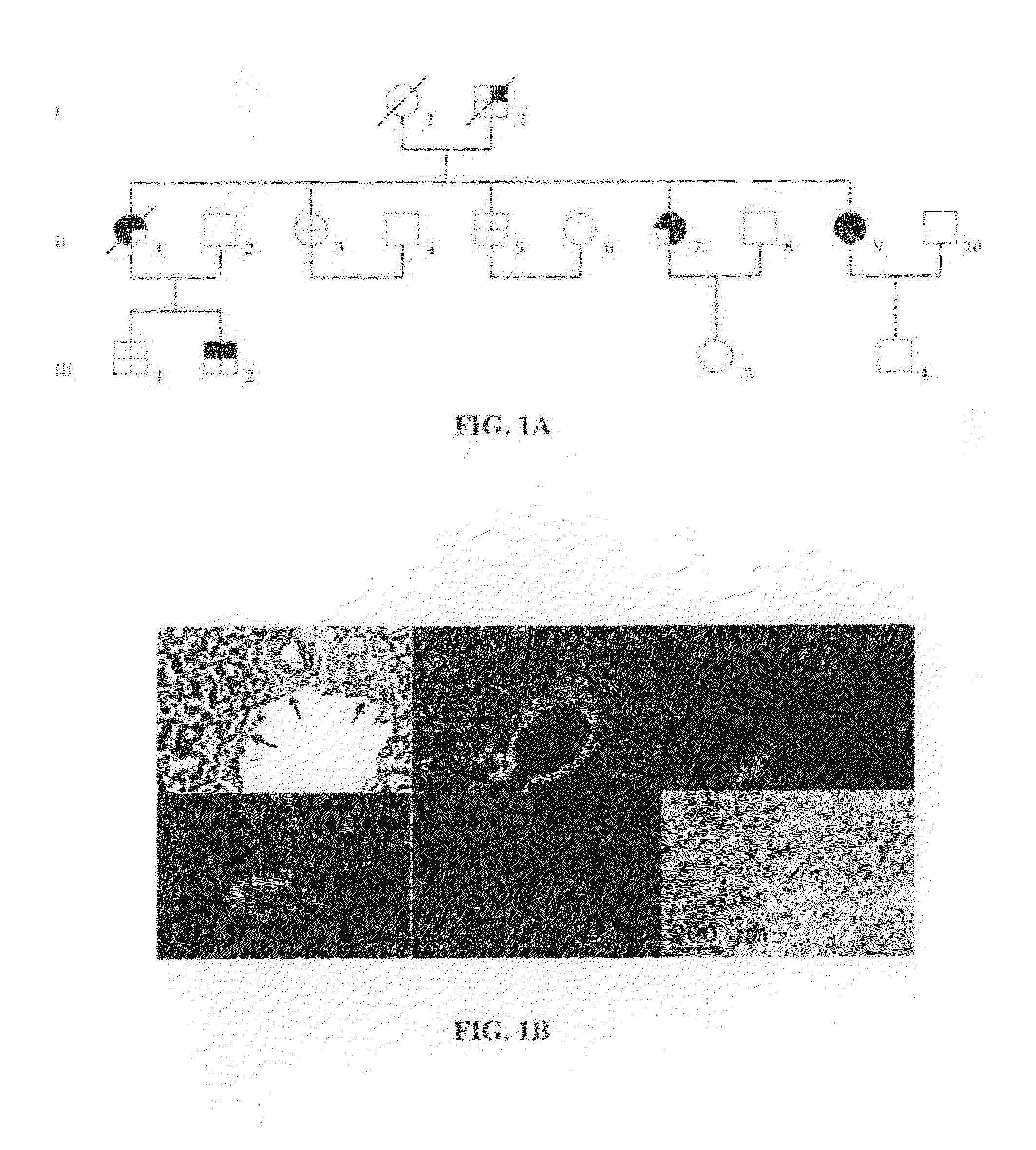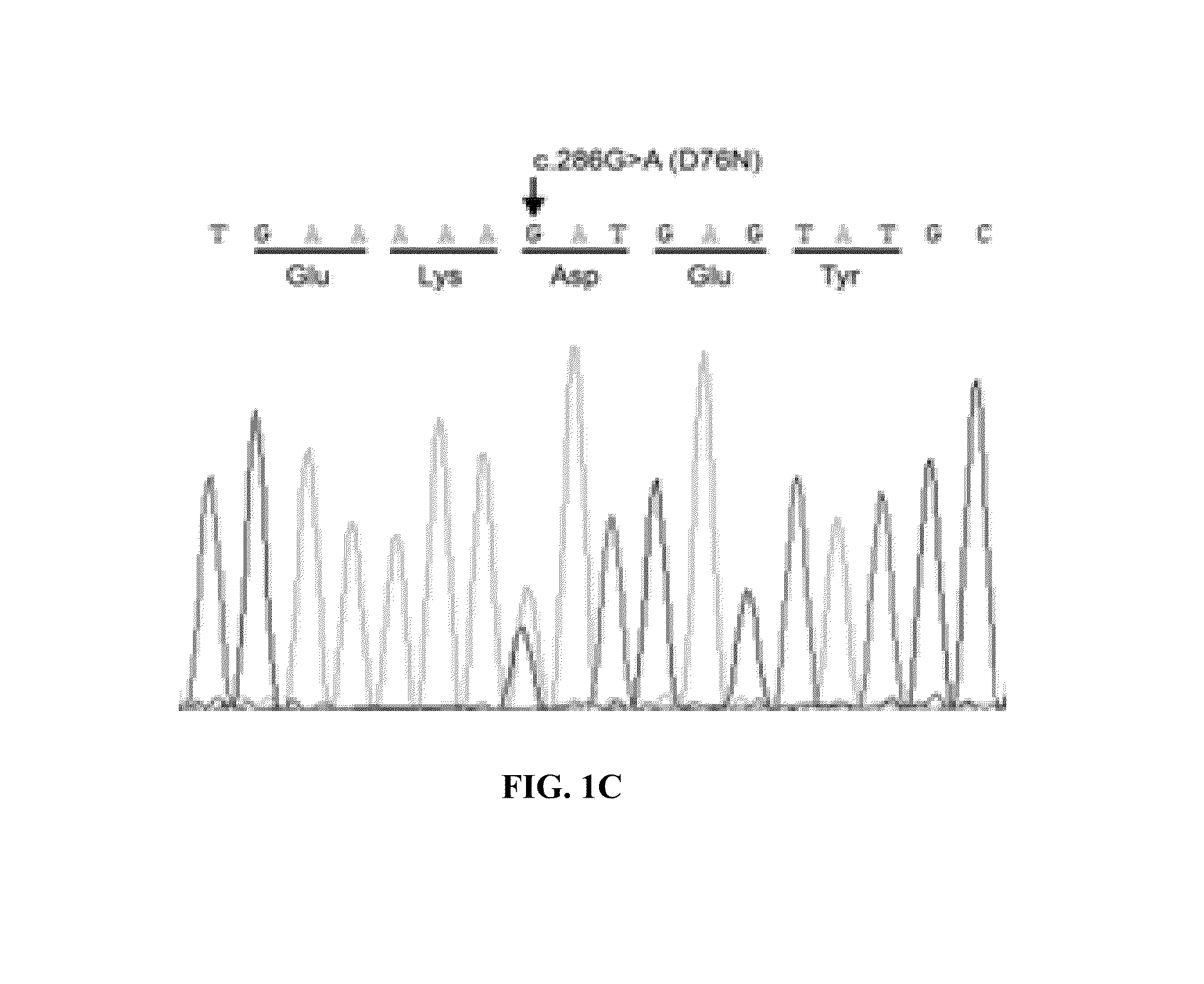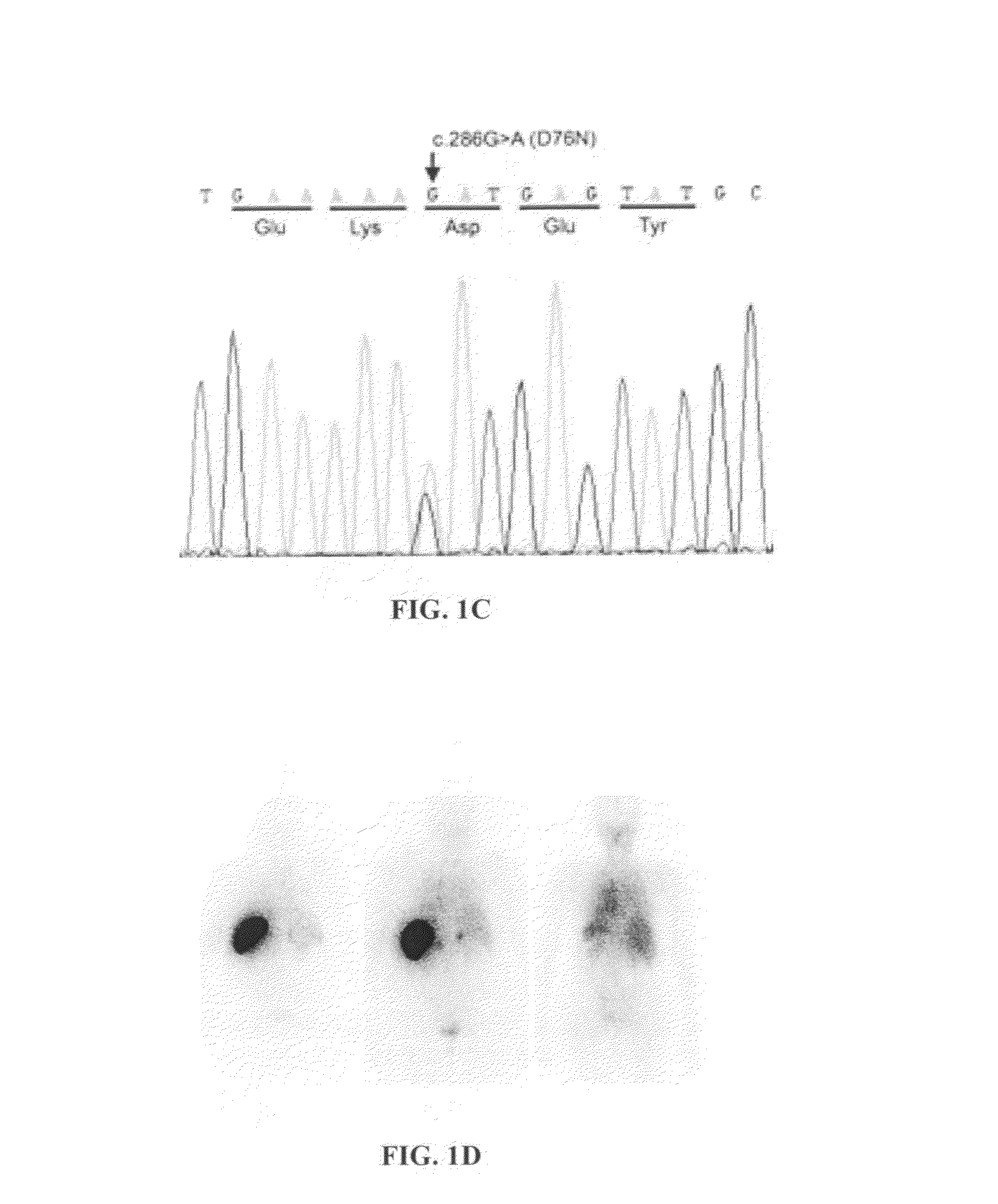Variant Beta2-microglobulin, characterization of the same and applications thereof
a microglobulin and beta2-microglobulin technology, applied in the field ofvariant beta2-microglobulin, characterization of the same and applications thereof, can solve the problems of almost universally fatal systemic amyloidosis, no treatment specifically targeting the amyloid deposits themselves, and about one per thousand of all deaths in developed countries, and achieve high throughput drug screening and high throughput
- Summary
- Abstract
- Description
- Claims
- Application Information
AI Technical Summary
Benefits of technology
Problems solved by technology
Method used
Image
Examples
example 1
[0125]Methodology: Informed consent and medical care are in accordance with the Declaration of Helsinki. Amyloid is detected by Congo red staining of sections of formalin fixed wax embedded biopsies. Immunohistochemical staining is carried out with monoclonal antibodies against serum amyloid A protein, κ and λ immunoglobulin light chains, transthyretin, fibrinogen, apolipoprotein AI, lysozyme and β2M (Tennent G A, Cafferty K D, Pepys M B, Hawkins P N.
[0126]Congo red overlay immunohistochemistry aids classification of amyloid deposits. In: Kyle R A, Gertz M A, eds. Amyloid and Amyloidosis 1998. Pearl River, N.Y.: Parthenon Publishing; 1999:160-2). Polyclonal rabbit anti-β2M antibody and gold-conjugated goat anti-rabbit IgG are used for immuno electron microscopy (Bridoux F, Sirac C, Hugue V, et al. Fanconi's syndrome induced by a monoclonal Vkappa3 light chain in Waldenstrom's macroglobulinemia. Am J Kidney Dis 2005;45:749-57). Amyloid fibrils are extracted (Tennent G A. Isolation an...
example 2
Experimental Procedures
[0138]Patients: The proband (II.7) developed alternating diarrhea and constipation, and persistent sicca syndrome at age 62 years. The diarrhea gradually worsened and she became intermittently incontinent of faeces. She lost 20 kg of weight over 2 years and developed postural dizziness. She had no peripheral sensory or joint symptoms and no dyspnea or edema. The proband's elder sister (II.1) died at age 70 years following a progressive 20 year illness with initial diarrhea and weight loss, and persistent sicca syndrome followed by symmetrical sensorimotor axonal polyneuropathy and severe orthostatic hypotension. The proband's younger sister (II.9) was 56 years old and had suffered 6 years of chronic diarrhea, weight loss and sicca syndrome. Endoscopic bowel examination did not reveal a cause for the diarrhea in any case. Two further elder siblings (II.3 and II.5) were fit and well but the son of the proband's elder sister (III.2) had recently developed chronic...
PUM
| Property | Measurement | Unit |
|---|---|---|
| Temperature | aaaaa | aaaaa |
| Temperature | aaaaa | aaaaa |
| Fraction | aaaaa | aaaaa |
Abstract
Description
Claims
Application Information
 Login to View More
Login to View More - R&D
- Intellectual Property
- Life Sciences
- Materials
- Tech Scout
- Unparalleled Data Quality
- Higher Quality Content
- 60% Fewer Hallucinations
Browse by: Latest US Patents, China's latest patents, Technical Efficacy Thesaurus, Application Domain, Technology Topic, Popular Technical Reports.
© 2025 PatSnap. All rights reserved.Legal|Privacy policy|Modern Slavery Act Transparency Statement|Sitemap|About US| Contact US: help@patsnap.com



